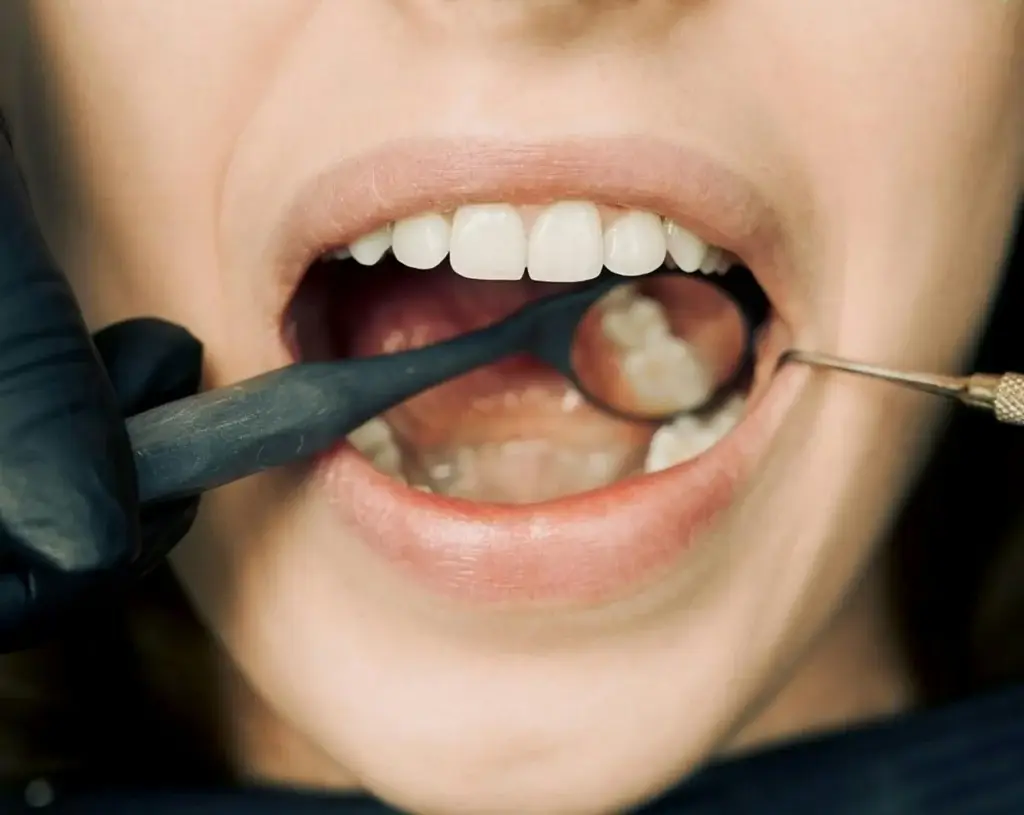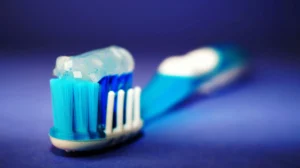Are you considering a smile makeover but worried about the potential side effects of smile design? You’re not alone. Many individuals dream of achieving that perfect smile, yet they hesitate due to concerns about possible complications. In this post, we’ll delve into the intricacies of smile design procedures, shedding light on the potential side effects and how to manage them effectively.
Smile design encompasses various cosmetic dental procedures such as porcelain veneers, dental implants, and teeth whitening, all aimed at enhancing your smile’s appearance. While these treatments can deliver stunning results, it’s crucial to be aware of the possible side effects to make informed decisions. Understanding these aspects can help you minimize discomfort and ensure a smooth recovery.
At Aleriom, we specialize in providing high-quality dental solutions, connecting clients with top dentists in Colombia. Our mission is to help you achieve your desired smile transformation affordably and with exceptional care. Whether you’re considering porcelain veneers or dental implants, knowing the potential side effects and how to address them is vital for a successful outcome.
In the following sections, we will explore common side effects associated with smile design procedures, tips for minimizing discomfort, and the steps you can take to ensure a smooth recovery. By the end of this post, you’ll have a comprehensive understanding of what to expect and how to prepare for your smile makeover journey.
Common Side Effects of Smile Design Procedures
Smile design procedures, while generally safe, can have some side effects. These may include tooth sensitivity, gum irritation, and temporary discomfort. Understanding these side effects can help you prepare and manage them effectively.
Below, we delve into some of the most common side effects associated with smile design procedures and offer actionable steps to manage them.
Tooth Sensitivity
One of the most frequently reported side effects of smile design procedures, such as teeth whitening and porcelain veneers, is increased tooth sensitivity. This sensitivity often manifests as a sharp pain or discomfort when consuming hot or cold foods and beverages.
To manage tooth sensitivity:
- Use toothpaste designed for sensitive teeth. These toothpastes contain ingredients that help block the transmission of sensation from the tooth surface to the nerve.
- Avoid extremely hot or cold foods and drinks immediately after the procedure.
- Consult your dentist about fluoride treatments or desensitizing agents that can be applied to your teeth.
Gum Irritation
Gum irritation is another common side effect, especially following procedures like veneers or crowns. This irritation can lead to redness, swelling, and minor bleeding.
To alleviate gum irritation:
- Maintain good oral hygiene by brushing and flossing gently around the affected area.
- Rinse your mouth with a saltwater solution to reduce inflammation and promote healing.
- Avoid using tobacco products, as they can exacerbate gum irritation.
Temporary Discomfort
Temporary discomfort is common after undergoing smile design procedures. This discomfort can range from mild soreness to more pronounced pain, depending on the complexity of the procedure.
To manage temporary discomfort:
- Take over-the-counter pain relievers, such as ibuprofen or acetaminophen, as directed by your dentist.
- Apply a cold compress to the outside of your mouth to reduce swelling and numb the area.
- Follow your dentist’s post-procedure care instructions meticulously to ensure a smooth recovery.
Post-Procedure Sensitivity
Some patients may experience heightened sensitivity in the days following their smile design procedure. This sensitivity is usually temporary and should subside as your mouth adjusts.
To cope with post-procedure sensitivity:
- Avoid acidic foods and drinks, which can aggravate sensitivity.
- Use a soft-bristled toothbrush to minimize irritation.
- Consider using a mouthguard at night if you grind your teeth, as this can exacerbate sensitivity.
Minor Infections
Although rare, minor infections can occur after smile design procedures. Signs of infection include persistent pain, swelling, and pus discharge.
To prevent and manage minor infections:
- Follow a strict oral hygiene routine, including brushing and flossing regularly.
- Use an antiseptic mouthwash to kill bacteria and reduce the risk of infection.
- Contact your dentist immediately if you suspect an infection, as they may prescribe antibiotics to treat it.
By understanding these common side effects and how to manage them, you can ensure a more comfortable and successful smile design experience. For more detailed information on specific procedures and their potential side effects, explore other sections of our blog or consult with one of our expert dentists at Aleriom.
Long-Term Considerations and Risks
While most side effects of smile design procedures are temporary, there are some long-term considerations and risks to be aware of. These include the potential for veneers to chip or crack and the need for maintenance of dental implants.
Understanding these long-term risks and how to mitigate them can help you make informed decisions about your smile makeover. Below, we explore some of the key long-term considerations and risks associated with smile design procedures.
Veneers: Longevity and Maintenance
Porcelain veneers are a popular choice for smile design due to their natural appearance and durability. However, they are not immune to wear and tear. Over time, veneers can chip, crack, or become discolored.
To extend the life of your veneers:
- Practice good oral hygiene: Regular brushing and flossing can prevent decay and gum disease, which can compromise the veneers.
- Avoid hard foods: Biting into hard foods or using your teeth as tools can damage the veneers.
- Regular dental check-ups: Regular visits to your dentist can help detect any issues early and ensure your veneers remain in good condition.
Real-life example: A patient who received porcelain veneers reported that after five years, one of the veneers chipped while eating hard candy. The patient had to undergo a replacement procedure, highlighting the importance of avoiding hard foods.
Dental Implants: Longevity and Complications
Dental implants are another common component of smile design. While they are designed to be a long-term solution, they require ongoing care and maintenance. Potential risks include implant failure, infection, and bone loss.
To mitigate these risks:
- Maintain good oral hygiene: Keeping your mouth clean can prevent infections that might compromise the implant.
- Avoid smoking: Smoking can increase the risk of implant failure.
- Regular dental visits: Regular check-ups can help monitor the health of your implants and surrounding bone.
Case study: A patient who smoked and had poor oral hygiene experienced implant failure within three years. After quitting smoking and improving oral care, the patient received a new implant, which has remained stable for over five years.
Gum Recession and Sensitivity
Gum recession is a potential long-term risk associated with smile design procedures, especially with veneers and crowns. Receding gums can expose the roots of your teeth, leading to sensitivity and increased risk of decay.
To prevent gum recession:
- Gentle brushing: Use a soft-bristled toothbrush and avoid aggressive brushing techniques.
- Regular dental cleanings: Professional cleanings can help maintain gum health and prevent recession.
- Monitor for signs: Be aware of early signs of gum recession, such as increased sensitivity or visible tooth roots, and consult your dentist promptly.
Example: A patient with veneers noticed increased tooth sensitivity after several years. Upon examination, the dentist found mild gum recession and recommended a soft-bristled toothbrush and desensitizing toothpaste to manage the sensitivity.
By understanding these long-term considerations and risks, you can take proactive steps to maintain your smile design results and ensure the longevity of your dental treatments. For more information on specific procedures and their potential risks, explore other sections of our blog or consult with one of our expert dentists at Aleriom.
Minimizing Discomfort and Ensuring a Smooth Recovery
Proper aftercare is essential to minimize discomfort and ensure a smooth recovery after smile design procedures. This includes following your dentist’s instructions, maintaining good oral hygiene, and managing pain effectively.
Follow Your Dentist’s Instructions
After undergoing a smile design procedure, your dentist will provide specific instructions tailored to your treatment. Adhering to these guidelines is crucial for minimizing discomfort and promoting healing.
- Medication: Take prescribed medications as directed to manage pain and prevent infection.
- Diet: Stick to a soft food diet initially to avoid irritating the treated area.
- Rest: Allow your body time to heal by avoiding strenuous activities for a few days.
Maintain Good Oral Hygiene
Keeping your mouth clean is vital to prevent infections and ensure a smooth recovery. Here are some tips for maintaining good oral hygiene post-procedure:
- Gentle Brushing: Use a soft-bristled toothbrush to clean your teeth gently, especially around the treated areas.
- Flossing: Floss carefully to avoid disturbing any temporary restorations or sensitive areas.
- Mouthwash: Use an alcohol-free mouthwash to kill bacteria and promote healing.
Manage Pain Effectively
Experiencing some level of discomfort is normal after smile design procedures. Here are some strategies to manage pain effectively:
- Over-the-Counter Pain Relievers: Medications like ibuprofen or acetaminophen can help alleviate pain and reduce inflammation.
- Cold Compress: Apply a cold compress to the outside of your mouth to numb the area and reduce swelling.
- Avoid Irritants: Steer clear of hot, spicy, or acidic foods and drinks that can exacerbate discomfort.
Use Recommended Products
Certain products can aid in your recovery and enhance comfort:
- Desensitizing Toothpaste: If you experience tooth sensitivity, use a toothpaste designed for sensitive teeth.
- Fluoride Treatments: Consult your dentist about fluoride treatments to strengthen your teeth and reduce sensitivity.
- Antiseptic Mouthwash: An antiseptic mouthwash can help prevent infections and promote healing.
By following these aftercare tips, you can minimize discomfort and ensure a smooth recovery after your smile design procedure. For more detailed guidance and personalized advice, consult with your dentist or explore additional resources on our website.
Achieving a Beautiful Smile with Minimal Side Effects
Embarking on a smile design journey can be both exciting and nerve-wracking. Understanding the potential side effects of smile design procedures is crucial for anyone considering this transformative experience. By being informed and prepared, you can navigate the process with confidence and ease.
Throughout this blog post, we have explored the common side effects associated with smile design procedures, including tooth sensitivity, gum irritation, and temporary discomfort. Managing these side effects effectively involves using specialized products, maintaining good oral hygiene, and following your dentist’s aftercare instructions meticulously. This proactive approach ensures a smoother recovery and helps you achieve the best possible results.
For those considering long-term smile design solutions like veneers or dental implants, it’s important to be aware of the potential risks and maintenance requirements. Veneers can chip or crack over time, while dental implants require ongoing care to prevent complications. By practicing good oral hygiene, avoiding harmful habits, and scheduling regular dental check-ups, you can extend the longevity of these treatments and enjoy a beautiful smile for years to come.
Here are some key takeaways to keep in mind:
- Tooth Sensitivity: Use toothpaste for sensitive teeth and avoid extreme temperatures in food and drinks.
- Gum Irritation: Maintain gentle oral hygiene and use saltwater rinses to reduce inflammation.
- Temporary Discomfort: Over-the-counter pain relievers and cold compresses can help manage pain and swelling.
- Long-Term Care: Regular dental visits and proper maintenance are essential for the longevity of veneers and implants.
By understanding and addressing the potential side effects of smile design procedures, you can ensure a successful and satisfying smile makeover. For personalized advice and detailed information, don’t hesitate to consult with your dentist or explore more resources on our website.
Ready to take the next step towards your dream smile? Follow the aftercare tips provided and consult your dentist for any concerns. Your journey to a stunning, healthy smile starts with informed and proactive care.








